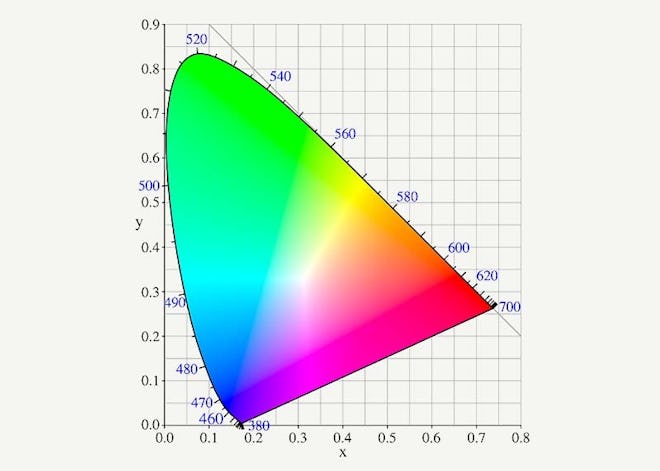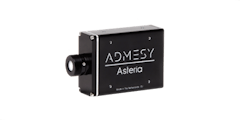
Color tristimulus values
Almost 100 years researchers into human vision and color perception carried out psychophysical tests to come up with a metric which can describe the human vision. The resultant colorimetric tristimulus XYZ do just that. They allow us to express any visible color with only three numbers.
CIEXYZ
The CIE 1931 color space is build from three axes X, Y and Z. They correspond to the color sensitive cones in our eyes. As a rule of thumb one should remember that X correlates to red, Y to green and Z to blue.
One should be aware that this simplified rule of thumb does not take into account the large overlap of the sensitivity of the cones in the green to red wavelength range.
CIELAB
L*a*b* is one colorspace derived from the CIE 1931 colorspace. It takes into account that we differentiate colors in three opposing dimensions:
- Lightness - a color is darker or brigher ⇒ L*
- Hue
- a color can be either greenish or reddish, but not both at the same time ⇒ a*
- a color can be either bluish or yellowish, but not both at the same time ⇒ b*
Color point
The Y value describes not only the greenish portion of a color, but stands also for the luminance of a color and is directly related to the brightness perception. In applications where the brightness of a color is not relevant a color can be described with just two numbers. The so-called chromaticity describes a color point with a specific hue and saturation. The most used metrics are CIExy and u'v'.
How are you measuring?
With fibers and other accessories even more type of measurements are possible. Often used accessories are integrating spheres, cuvettes for fluids, light sources or filter holders.
A cosine corrector collects the light from the half space under 180 degrees. A typical application is the illuminance measurement of a lighting situation.
Consumers are used to enjoy top-quality displays in their mobile phones, tablets, laptops and even cars. Emerging technologies such as lighting surfaces for office and home illumination are expected to look equally perfect. Both displays and luminous surfaces are the main application areas for imaging colorimeters.
Measuring the luminance or color values at a specific location of the device under test is a typical use case when measuring displays. It can, however, also be meaningful to assess reflected light.
Viewfinder Spectrometer

Standard lens 1.2° spot ⌀ 4.56 mm ‑ 6.71 m
Viewfinder Spectrometer

Close up lens 0.75° spot ⌀ 0.96 ‑ 1.47 mm
Colorimeter 2.1 mm

0.001 - 30 000 cd/m² (190 000 cd/m² in UHL mode)
Colorimeter 2.1 mm w/ pointer

0.001 - 30 000 cd/m² (190 000 cd/m² in UHL mode)
Colorimeter 5 mm

0.001 - 30 000 cd/m² (190 000 cd/m² in UHL mode)
Colorimeter 10 mm

0.001 - 30 000 cd/m² (190 000 cd/m² in UHL mode)
Colorimeter 10 mm wide-angle

0.0003 - 7 500 cd/m² (190 000 cd/m² in UHL mode)
Colorimeter 20 mm

0.0003 - 7 500 cd/m² (48 000 cd/m² in UHL mode)
Colorimeter 27 mm wide-angle

0.0001 - 2 800 cd/m² (20 000 cd/m² in UHL mode)
Spectrometer

VIS 380 - 780 nm
High-End Spectrometer

VIS 360 - 940 nm


